Junjie Ke
Calibrated Multi-Preference Optimization for Aligning Diffusion Models
Feb 04, 2025Abstract:Aligning text-to-image (T2I) diffusion models with preference optimization is valuable for human-annotated datasets, but the heavy cost of manual data collection limits scalability. Using reward models offers an alternative, however, current preference optimization methods fall short in exploiting the rich information, as they only consider pairwise preference distribution. Furthermore, they lack generalization to multi-preference scenarios and struggle to handle inconsistencies between rewards. To address this, we present Calibrated Preference Optimization (CaPO), a novel method to align T2I diffusion models by incorporating the general preference from multiple reward models without human annotated data. The core of our approach involves a reward calibration method to approximate the general preference by computing the expected win-rate against the samples generated by the pretrained models. Additionally, we propose a frontier-based pair selection method that effectively manages the multi-preference distribution by selecting pairs from Pareto frontiers. Finally, we use regression loss to fine-tune diffusion models to match the difference between calibrated rewards of a selected pair. Experimental results show that CaPO consistently outperforms prior methods, such as Direct Preference Optimization (DPO), in both single and multi-reward settings validated by evaluation on T2I benchmarks, including GenEval and T2I-Compbench.
Cropper: Vision-Language Model for Image Cropping through In-Context Learning
Aug 14, 2024



Abstract:The goal of image cropping is to identify visually appealing crops within an image. Conventional methods rely on specialized architectures trained on specific datasets, which struggle to be adapted to new requirements. Recent breakthroughs in large vision-language models (VLMs) have enabled visual in-context learning without explicit training. However, effective strategies for vision downstream tasks with VLMs remain largely unclear and underexplored. In this paper, we propose an effective approach to leverage VLMs for better image cropping. First, we propose an efficient prompt retrieval mechanism for image cropping to automate the selection of in-context examples. Second, we introduce an iterative refinement strategy to iteratively enhance the predicted crops. The proposed framework, named Cropper, is applicable to a wide range of cropping tasks, including free-form cropping, subject-aware cropping, and aspect ratio-aware cropping. Extensive experiments and a user study demonstrate that Cropper significantly outperforms state-of-the-art methods across several benchmarks.
ArtVLM: Attribute Recognition Through Vision-Based Prefix Language Modeling
Aug 07, 2024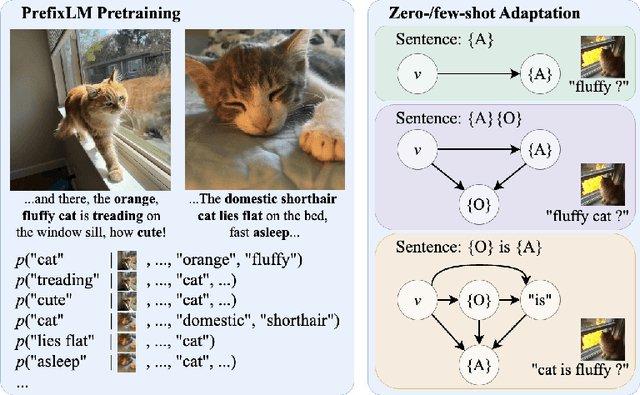



Abstract:Recognizing and disentangling visual attributes from objects is a foundation to many computer vision applications. While large vision language representations like CLIP had largely resolved the task of zero-shot object recognition, zero-shot visual attribute recognition remains a challenge because CLIP's contrastively-learned vision-language representation cannot effectively capture object-attribute dependencies. In this paper, we target this weakness and propose a sentence generation-based retrieval formulation for attribute recognition that is novel in 1) explicitly modeling a to-be-measured and retrieved object-attribute relation as a conditional probability graph, which converts the recognition problem into a dependency-sensitive language-modeling problem, and 2) applying a large pretrained Vision-Language Model (VLM) on this reformulation and naturally distilling its knowledge of image-object-attribute relations to use towards attribute recognition. Specifically, for each attribute to be recognized on an image, we measure the visual-conditioned probability of generating a short sentence encoding the attribute's relation to objects on the image. Unlike contrastive retrieval, which measures likelihood by globally aligning elements of the sentence to the image, generative retrieval is sensitive to the order and dependency of objects and attributes in the sentence. We demonstrate through experiments that generative retrieval consistently outperforms contrastive retrieval on two visual reasoning datasets, Visual Attribute in the Wild (VAW), and our newly-proposed Visual Genome Attribute Ranking (VGARank).
Optical Diffusion Models for Image Generation
Jul 15, 2024



Abstract:Diffusion models generate new samples by progressively decreasing the noise from the initially provided random distribution. This inference procedure generally utilizes a trained neural network numerous times to obtain the final output, creating significant latency and energy consumption on digital electronic hardware such as GPUs. In this study, we demonstrate that the propagation of a light beam through a semi-transparent medium can be programmed to implement a denoising diffusion model on image samples. This framework projects noisy image patterns through passive diffractive optical layers, which collectively only transmit the predicted noise term in the image. The optical transparent layers, which are trained with an online training approach, backpropagating the error to the analytical model of the system, are passive and kept the same across different steps of denoising. Hence this method enables high-speed image generation with minimal power consumption, benefiting from the bandwidth and energy efficiency of optical information processing.
Parrot: Pareto-optimal Multi-Reward Reinforcement Learning Framework for Text-to-Image Generation
Jan 11, 2024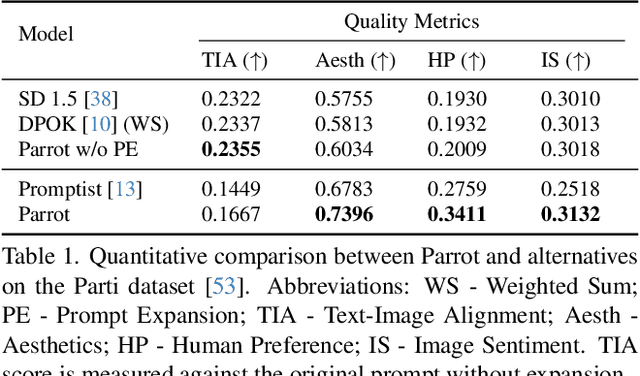

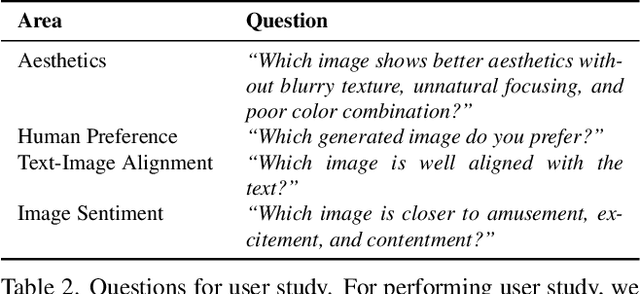
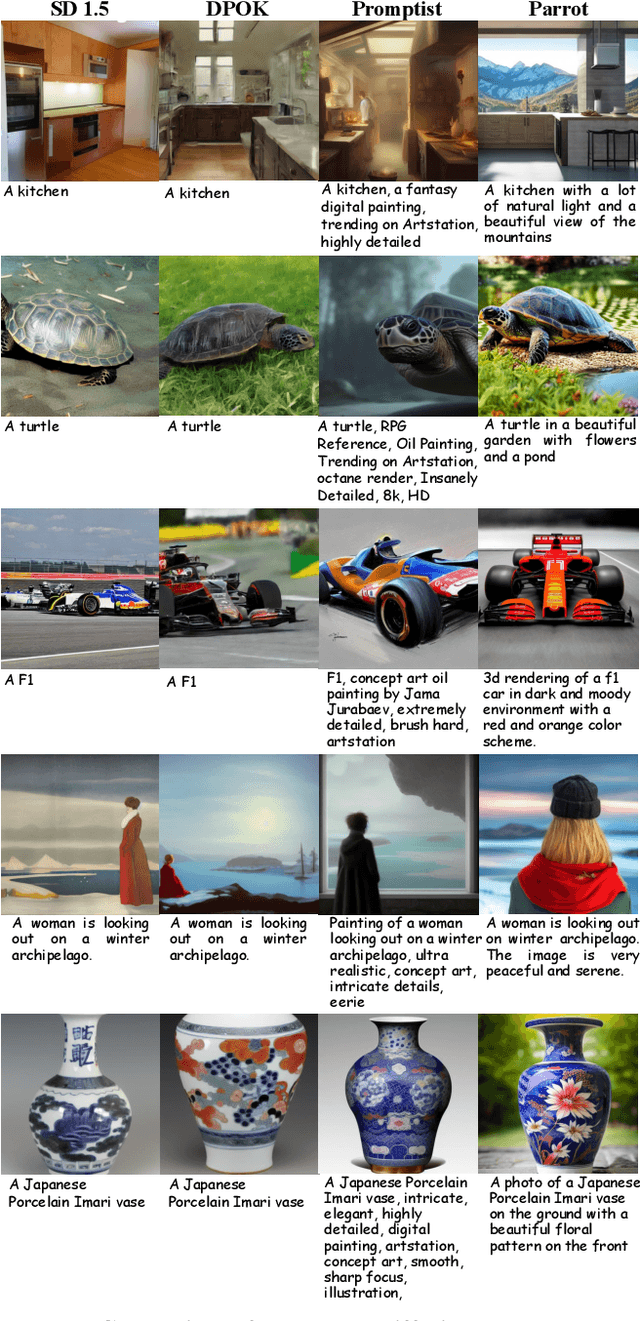
Abstract:Recent works demonstrate that using reinforcement learning (RL) with quality rewards can enhance the quality of generated images in text-to-image (T2I) generation. However, a simple aggregation of multiple rewards may cause over-optimization in certain metrics and degradation in others, and it is challenging to manually find the optimal weights. An effective strategy to jointly optimize multiple rewards in RL for T2I generation is highly desirable. This paper introduces Parrot, a novel multi-reward RL framework for T2I generation. Through the use of the batch-wise Pareto optimal selection, Parrot automatically identifies the optimal trade-off among different rewards during the RL optimization of the T2I generation. Additionally, Parrot employs a joint optimization approach for the T2I model and the prompt expansion network, facilitating the generation of quality-aware text prompts, thus further enhancing the final image quality. To counteract the potential catastrophic forgetting of the original user prompt due to prompt expansion, we introduce original prompt centered guidance at inference time, ensuring that the generated image remains faithful to the user input. Extensive experiments and a user study demonstrate that Parrot outperforms several baseline methods across various quality criteria, including aesthetics, human preference, image sentiment, and text-image alignment.
Rich Human Feedback for Text-to-Image Generation
Dec 15, 2023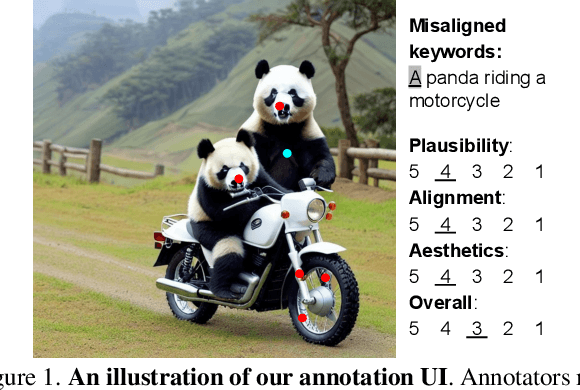
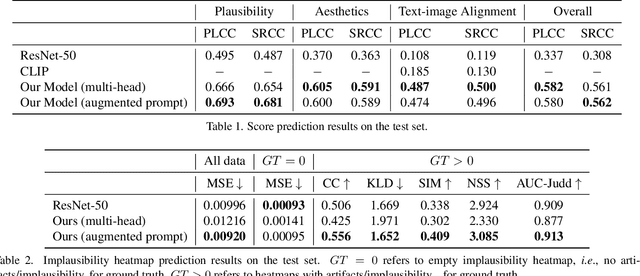
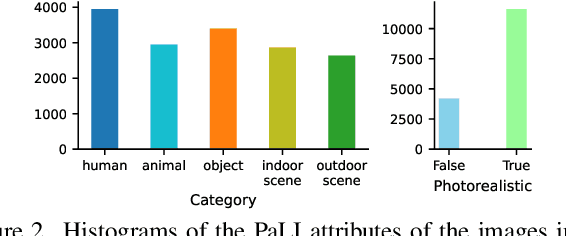

Abstract:Recent Text-to-Image (T2I) generation models such as Stable Diffusion and Imagen have made significant progress in generating high-resolution images based on text descriptions. However, many generated images still suffer from issues such as artifacts/implausibility, misalignment with text descriptions, and low aesthetic quality. Inspired by the success of Reinforcement Learning with Human Feedback (RLHF) for large language models, prior works collected human-provided scores as feedback on generated images and trained a reward model to improve the T2I generation. In this paper, we enrich the feedback signal by (i) marking image regions that are implausible or misaligned with the text, and (ii) annotating which words in the text prompt are misrepresented or missing on the image. We collect such rich human feedback on 18K generated images and train a multimodal transformer to predict the rich feedback automatically. We show that the predicted rich human feedback can be leveraged to improve image generation, for example, by selecting high-quality training data to finetune and improve the generative models, or by creating masks with predicted heatmaps to inpaint the problematic regions. Notably, the improvements generalize to models (Muse) beyond those used to generate the images on which human feedback data were collected (Stable Diffusion variants).
Forward-Forward Training of an Optical Neural Network
May 30, 2023



Abstract:Neural networks (NN) have demonstrated remarkable capabilities in various tasks, but their computation-intensive nature demands faster and more energy-efficient hardware implementations. Optics-based platforms, using technologies such as silicon photonics and spatial light modulators, offer promising avenues for achieving this goal. However, training multiple trainable layers in tandem with these physical systems poses challenges, as they are difficult to fully characterize and describe with differentiable functions, hindering the use of error backpropagation algorithm. The recently introduced Forward-Forward Algorithm (FFA) eliminates the need for perfect characterization of the learning system and shows promise for efficient training with large numbers of programmable parameters. The FFA does not require backpropagating an error signal to update the weights, rather the weights are updated by only sending information in one direction. The local loss function for each set of trainable weights enables low-power analog hardware implementations without resorting to metaheuristic algorithms or reinforcement learning. In this paper, we present an experiment utilizing multimode nonlinear wave propagation in an optical fiber demonstrating the feasibility of the FFA approach using an optical system. The results show that incorporating optical transforms in multilayer NN architectures trained with the FFA, can lead to performance improvements, even with a relatively small number of trainable weights. The proposed method offers a new path to the challenge of training optical NNs and provides insights into leveraging physical transformations for enhancing NN performance.
MRET: Multi-resolution Transformer for Video Quality Assessment
Mar 29, 2023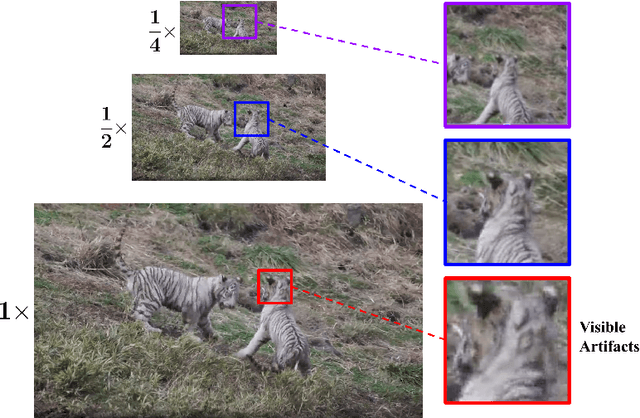
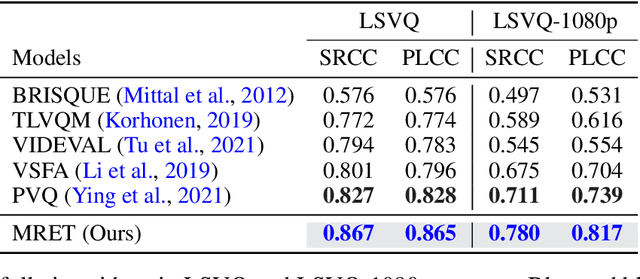
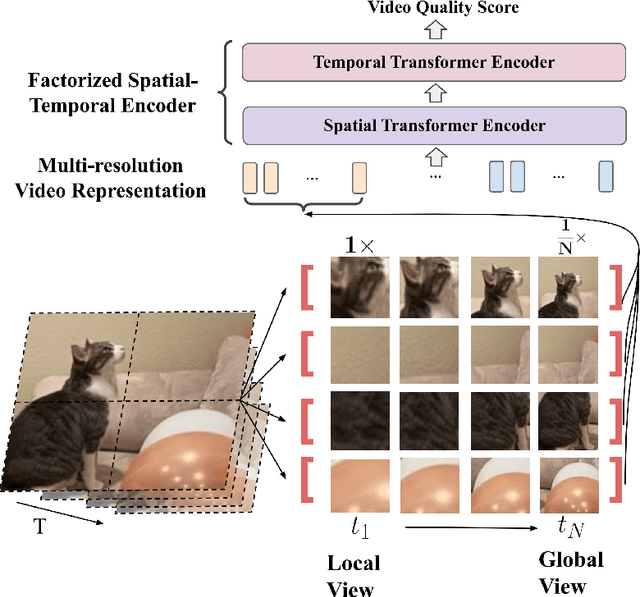
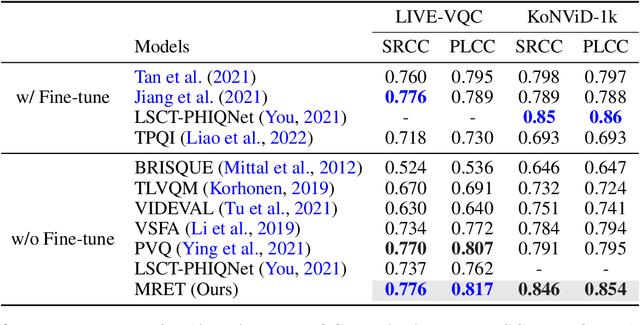
Abstract:No-reference video quality assessment (NR-VQA) for user generated content (UGC) is crucial for understanding and improving visual experience. Unlike video recognition tasks, VQA tasks are sensitive to changes in input resolution. Since large amounts of UGC videos nowadays are 720p or above, the fixed and relatively small input used in conventional NR-VQA methods results in missing high-frequency details for many videos. In this paper, we propose a novel Transformer-based NR-VQA framework that preserves the high-resolution quality information. With the multi-resolution input representation and a novel multi-resolution patch sampling mechanism, our method enables a comprehensive view of both the global video composition and local high-resolution details. The proposed approach can effectively aggregate quality information across different granularities in spatial and temporal dimensions, making the model robust to input resolution variations. Our method achieves state-of-the-art performance on large-scale UGC VQA datasets LSVQ and LSVQ-1080p, and on KoNViD-1k and LIVE-VQC without fine-tuning.
VILA: Learning Image Aesthetics from User Comments with Vision-Language Pretraining
Mar 24, 2023



Abstract:Assessing the aesthetics of an image is challenging, as it is influenced by multiple factors including composition, color, style, and high-level semantics. Existing image aesthetic assessment (IAA) methods primarily rely on human-labeled rating scores, which oversimplify the visual aesthetic information that humans perceive. Conversely, user comments offer more comprehensive information and are a more natural way to express human opinions and preferences regarding image aesthetics. In light of this, we propose learning image aesthetics from user comments, and exploring vision-language pretraining methods to learn multimodal aesthetic representations. Specifically, we pretrain an image-text encoder-decoder model with image-comment pairs, using contrastive and generative objectives to learn rich and generic aesthetic semantics without human labels. To efficiently adapt the pretrained model for downstream IAA tasks, we further propose a lightweight rank-based adapter that employs text as an anchor to learn the aesthetic ranking concept. Our results show that our pretrained aesthetic vision-language model outperforms prior works on image aesthetic captioning over the AVA-Captions dataset, and it has powerful zero-shot capability for aesthetic tasks such as zero-shot style classification and zero-shot IAA, surpassing many supervised baselines. With only minimal finetuning parameters using the proposed adapter module, our model achieves state-of-the-art IAA performance over the AVA dataset.
MUSIQ: Multi-scale Image Quality Transformer
Aug 12, 2021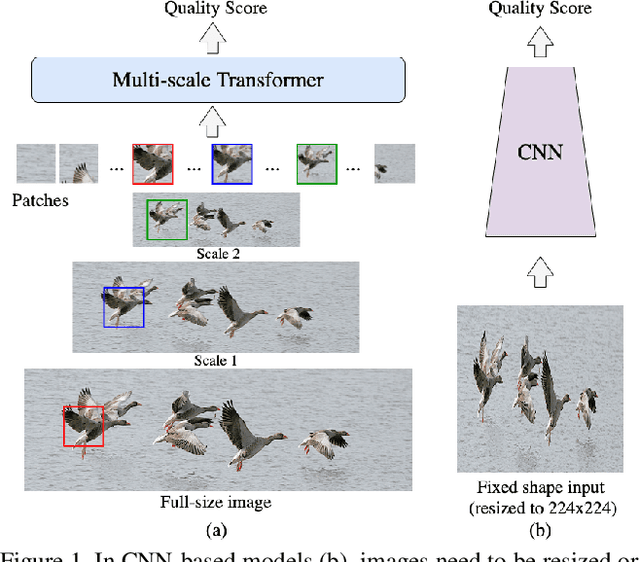
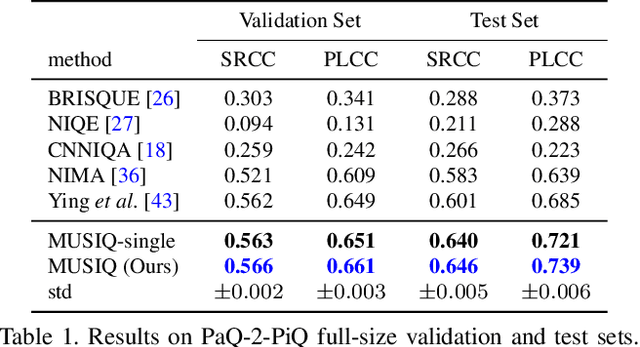
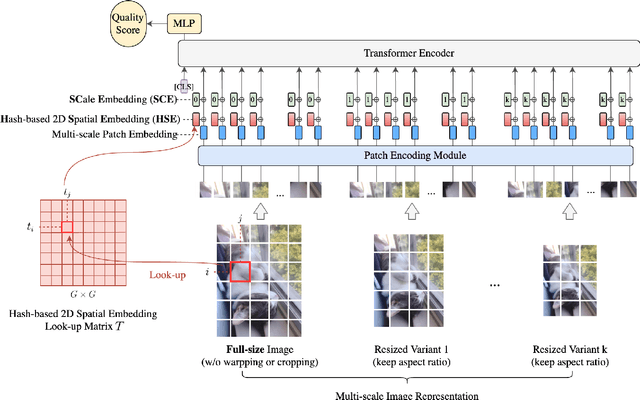
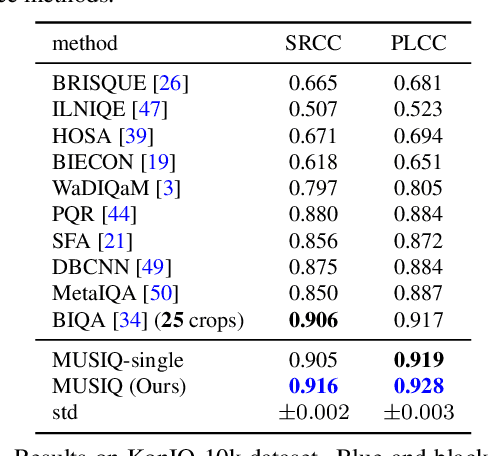
Abstract:Image quality assessment (IQA) is an important research topic for understanding and improving visual experience. The current state-of-the-art IQA methods are based on convolutional neural networks (CNNs). The performance of CNN-based models is often compromised by the fixed shape constraint in batch training. To accommodate this, the input images are usually resized and cropped to a fixed shape, causing image quality degradation. To address this, we design a multi-scale image quality Transformer (MUSIQ) to process native resolution images with varying sizes and aspect ratios. With a multi-scale image representation, our proposed method can capture image quality at different granularities. Furthermore, a novel hash-based 2D spatial embedding and a scale embedding is proposed to support the positional embedding in the multi-scale representation. Experimental results verify that our method can achieve state-of-the-art performance on multiple large scale IQA datasets such as PaQ-2-PiQ, SPAQ and KonIQ-10k.
 Add to Chrome
Add to Chrome Add to Firefox
Add to Firefox Add to Edge
Add to Edge